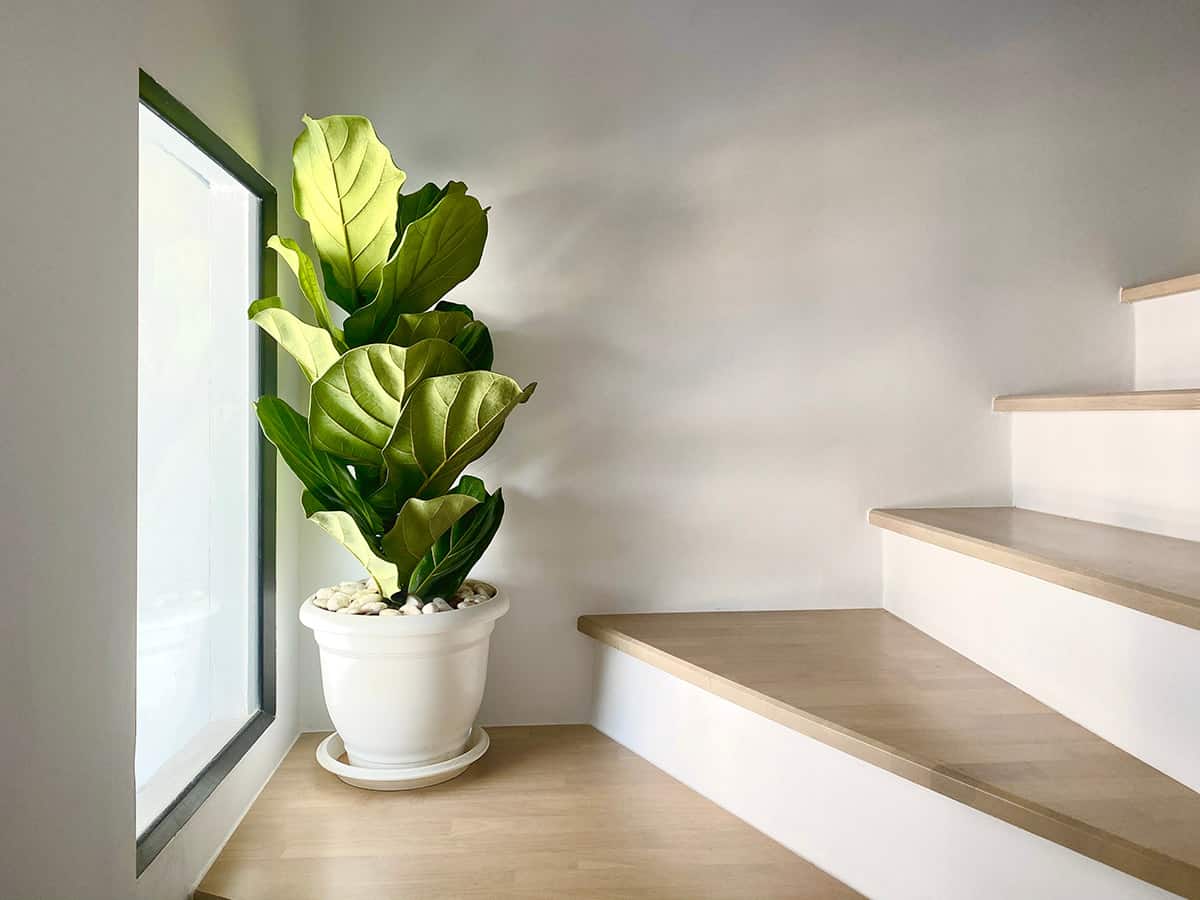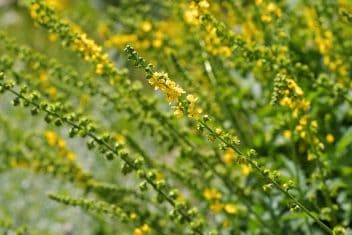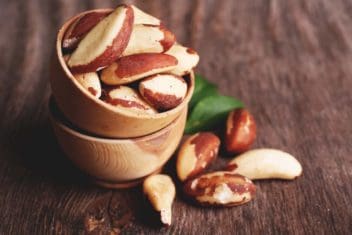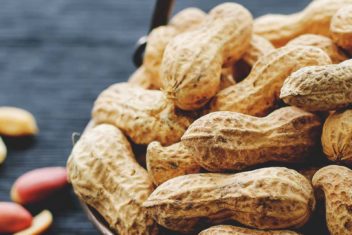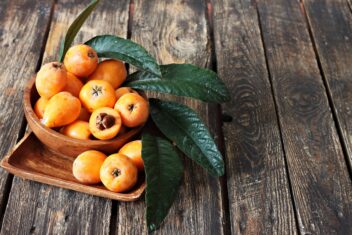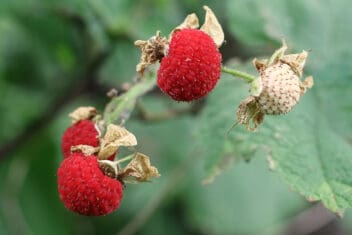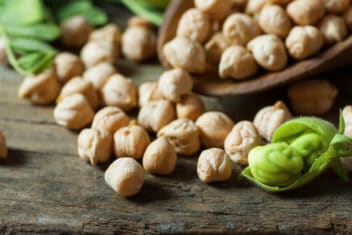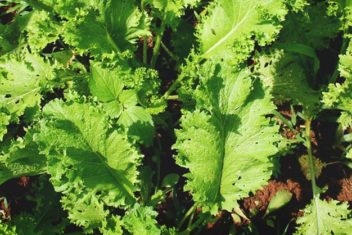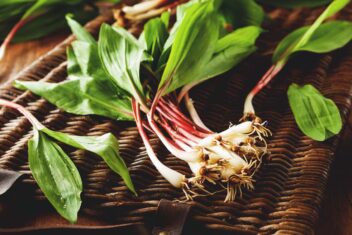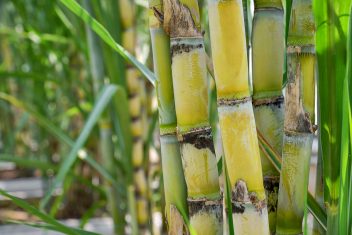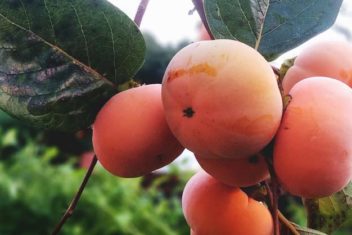When I first started growing plants over a decade ago, I only wanted to grow those that would provide food for my family. Then I found fiddle-leaf figs (Ficus lyrata). Unlike the fig trees in my orchard, this tree doesn’t grow fruit (or if it does, it’s inedible). So why do I love growing fiddle-leaf figs?
Have you seen them? They’re gorgeous. No wonder they have become the “in” plant to have. You see them in design and fashion magazines, upmarket hotel lobbies, and stylish homes all over the place. They’re one of the top-selling houseplants out there.
They’re also finicky, so if you want to start growing one, or you want to make the one you have thrive, keep reading.
What Are Fiddle-Leaf Figs?
Native to West African lowland rain forests, fiddle-leaf figs are an evergreen ornamental also known as banjo fig or lyre leaf tree. You can grow them outdoors if you live in the right climate, but they are more suited to being an indoor ornamental in most places.
In their native environment, they can grow up to 50 feet tall. In the US, outside specimens typically grow to about 20 feet tall. Indoors, they’re limited to about 10 feet tall.
You won’t normally see the fiddle-leaf fig produce fruit, especially indoors, but don’t worry, you aren’t missing out on anything. They aren’t like the edible figs that people spend a fortune on at supermarkets.
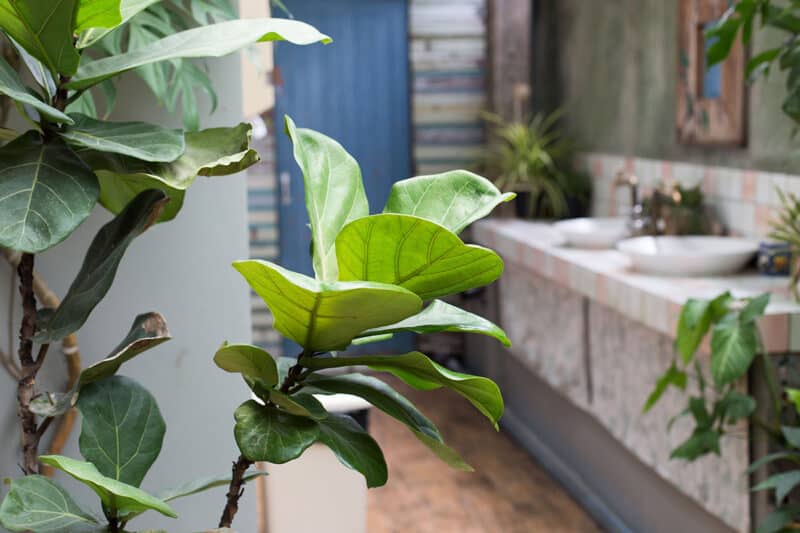
While beautiful, with its massive, Jurassic-looking foliage, this popular houseplant has a bit of a reputation for being particularly fickle in regards to light, water, soil, and temperature.
Fiddle-leaf figs release a latex that can be irritating to the skin. Wear gloves when working with this plant.
Propagating Ficus Lyrata
It’s possible, but very hard to grow a fiddle-leaf by seed, so I don’t recommend trying. That’s okay, there are two easy ways to propagate this plant.
Air Layering
If you’ve never tried this before, it’s not overly complicated. Basically, you’re growing new roots on the stem of the mother plant. Once roots are formed, you can cut off the stem with the new roots and plant it in its own container.
- Moisten a big bunch of sphagnum moss and squeeze the excess water out.
- Cut the leaves away from a section of woody stem. You need a 12-inch exposed section, if possible.
- Make a cut horizontally all the way around the stem. Don’t cut deep. When you see the latex ooze out you have gone far enough.
- Do the same thing three inches below the first cut.
- Make some vertical cuts around the stem, joining the two horizontal cuts you made. Be careful not to cut too deep, or to slip and slice your hand.
- Strip off the brown outer layer between the vertical cuts so the green inner layer between the horizontal cuts is exposed.
- Brush this exposed part with rooting hormone.
- Wrap a good handful of the moss around the exposed stem and wrap this in a thick clear plastic (some people use a plastic bottle cut in half lengthways).
- Seal both ends with string.
- Every week open the top of the plastic and mist the moss to keep it moist and reseal.
- After two to four weeks you should see roots filling the plastic pouch.
- Once the roots have nearly filled the bag, cut the stem just below the plastic bag.
- Take the plastic off and gently tease the roots out of the moss. Plant in a new container.
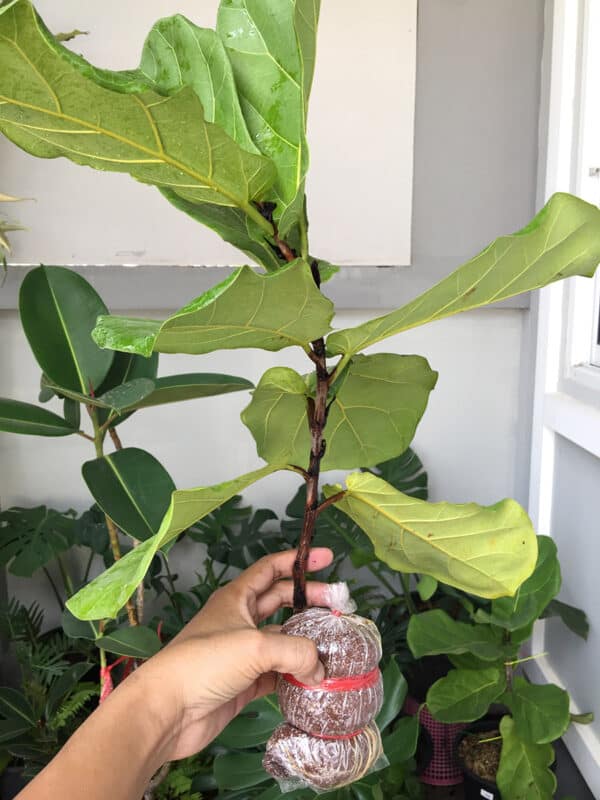
The air layering method is extremely easy and you don’t have to worry about trying to keep a separate plant alive, since the mother plant is still feeding the newly-forming part.
Growing Ficus Lyrata by Stem Cutting
Stem cuttings are a reliable method, but take longer to produce roots and the transplanted cutting is usually smaller to start with than the air layered stem.
- Cut off a healthy side branch close to the stem, taking care to get at least three leaves. Make sure the leaves are in good condition and not browning at the edges.
- Cut the leaves away from the lower half of the branch. You want to have at least two nodes exposed. Nodes are where the leaves attach to the branch. Make sure there is at least one or two leaves left on the top of the branch.
- Just below the lowest node, cut the branch at 45 degrees.
- Dip in rooting hormone and plant in a small container filled with seed raising mix. Firm down to hold the branch in place.
- Place a large plastic bag over the plant and prop it up using sticks so it doesn’t touch the foliage.
- Keep the soil moist and test for root development in four to six weeks by very gently pulling on the plant. If you feel resistance, the roots have formed.
- Transplant it to its new home.
Planting Fiddle-Leaf Figs
Whether you buy a fiddle-leaf fig or propagate your own, you’ll need to put it in its new home. As a quick aside, if you buy a transplant, try not to do it during extreme heat or cold. Transferring the plant from the store to your house could shock or even kill it. This plant REALLY doesn’t like extreme or rapid changes in temperature.
Choose a container that is a few inches larger than the one the fiddle-leaf fig transplant is growing in and make sure that it has at least one drainage hole. Fill a few inches at the bottom with loamy, well-draining soil. Place your plant in the pot and fill around it with soil.
Place your fig in a spot that gets lots of indirect sunlight. Six to eight hours next to a window with a sheer curtain over it would be ideal. It can handle an hour or two of direct sunlight, but not during the hottest part of the day. Not enough sunlight and your FFL will grow leggy.
Care and Maintenance
Don’t overwater your potted plant, but keep the soil moist. If you aren’t sure how moist it should be, aim to have the soil slightly dry rather than too wet, so the roots can dry out between watering. You don’t want to let the soil get too dry, but it should never be soggy, either.
Fiddle-leaf figs are sensitive to standing water and they’ll rot in a hurry if the roots aren’t in soil with good drainage. You’ll notice brown spots on the leaves if the roots are in too much moisture. Let the first inch or so of soil dry out in between watering.
When you water, be sure to empty the catchment under your pot so that the water doesn’t sit.
Fertilize with a slow-release granular fertilizer made for container plants. Ficus lyrata loves food so to avoid having to feed it liquid fertilizer every two weeks, use the slow release option. Otherwise, use a liquid fertilizer every other week.
Prune to maintain symmetry. You’ll often see fiddle-leaf figs growing a bit lopsided to reach towards where they get more light. New branches emerge from the nearest node to anywhere you cut, so you can create fullness in a sparse spot with careful pruning.
If you like the modern ‘tree’ look, remove the lower leaves to form a trunk and prune the tips of the upper branches to encourage a bushier growth habit. If you like a more bush-like growth habit, don’t prune the lower branches.
Ficus Lyrata grows quite swiftly at times and may become root-bound. Repot every couple of years if the plant appears to be outgrowing its container.
Fiddle-leaf figs have aerial roots, which are roots that emerge out of the trunk above the soil and reach down into the soil. These aren’t a sign of being rootbound. Instead, look for roots circling the perimeter of the pot or coming out of the drainage hole. That’s when it’s time to repot.
Every month wipe the leaves gently with a moist cloth. Be careful and wipe both the front and back of leaves. If you don’t do this, dust clogs up the pores of the leaves and they can’t respirate.

Rotate your plants regularly so they don’t grow lopsided. In dry climates, spray the leaves regularly to improve humidity. You can also grow plants on a tray filled with rocks. Put water in the rock tray to raise the humidity around the plant.
How to Grow Fiddle-Leaf Figs Outdoors
If you’re planning on growing your fiddle-leaf fig outside, you need a subtropical environment, such as in USDA Growing Zones 11-13. But just living in a Zone with the right temperature isn’t enough. They need humidity, the right light, and moist soil.
Nighttime temperatures can’t drop below 50ºF and daytime should not exceed 95ºF. They need six to eight hours of sunlight. They love moist, still air and plenty of water. The soil should be rich and well-draining with a pH of 6.6 to 7.

Choose compact varieties like ‘Compacta’ and ‘Bambino’ if space is an issue. ‘Suncoast’ is more cold-tolerant than others for outside planting.
Fertilize the tree three times a year in spring, summer, and fall.
For an outside tree, you can cut it back hard to keep it to the size you want. Just don’t trim back more than a third of the plant at a time.
Growing in Containers Outdoors
You’ll be far more successful growing fiddle-leaf figs inside and leaving them there, but if you want, you can move the container outside during good weather.
First, you’ll need to transition outside slowly over a period of weeks so you don’t shock the plant. Make sure it’s not exposed to strong wind and rain.
Place the container in a slightly shady spot, gradually moving it into a full sun position. If you live in a sunny, hot area, keep it in dappled sunlight, especially in the hottest part of the day. Every two weeks rotate the container 1/4 a turn clockwise to give all parts of the plant exposure to sunshine.
If the plant loses a few leaves, don’t panic. They will often do this with changes in temperature. They’ll usually grow back.
Common Problems and Solutions for Growing Fiddle-Leaf Figs
Not only are fiddle-leaf figs finicky about their growing conditions, but they’re prone to several pests and diseases.
Spider Mites
Often the first time you notice spider mites is when you see the webbing on the foliage or yellow and brown spots on the leaves.
This little creature can kill your plant if they’re left unchecked in high enough in numbers. Use a miticide or oil-based spray like neem oil. You can also try a dish soap solution. Use 1 liter of water to 1 teaspoon of liquid dish soap. Wipe the leaves with this mixture regularly.
Mealybugs
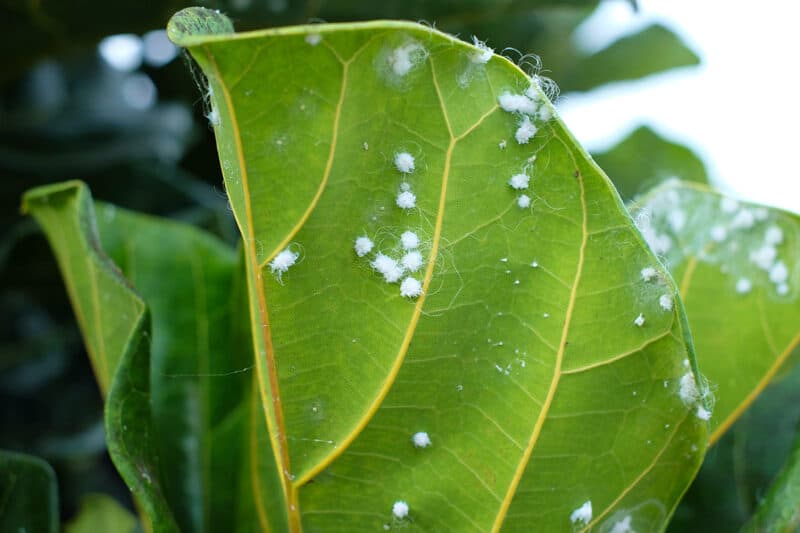
Sapsuckers like mealybugs can cause a lot of damage to a Ficus lyrata. Yellowing of leaves and low vigor are often signs of this pest.
You can prune out small infestations. Indoors, use rubbing alcohol on a cotton swab to touch the bug, or use the dish soap method above.
Fungus Gnats
Fungus gnats love potting mix and seed raising mix and can harm roots by chewing on them. They look like little tiny mosquitos and are often seen in light by windows.
The best natural method to control them is to cut a potato into large cubes and place this on the medium in your container. The larvae that do all the damage love potatoes and will infest them. Remove the potato every two days and replace it with fresh pieces.
Root Rot
If your plant is yellowing, develops large brown spots, or seems to be slowly dying, you may have root rot. This can be from overwatering or there is a pathogen in the container medium.
Remove the plant from the container and wash the roots under running water. Cut away any rotting, sludgy, or diseased-looking root. Dip the remaining roots in a fungicide. Before repotting, wash the container out with bleach and water. Replant, ensuring good drainage. Use a new potting mix.
